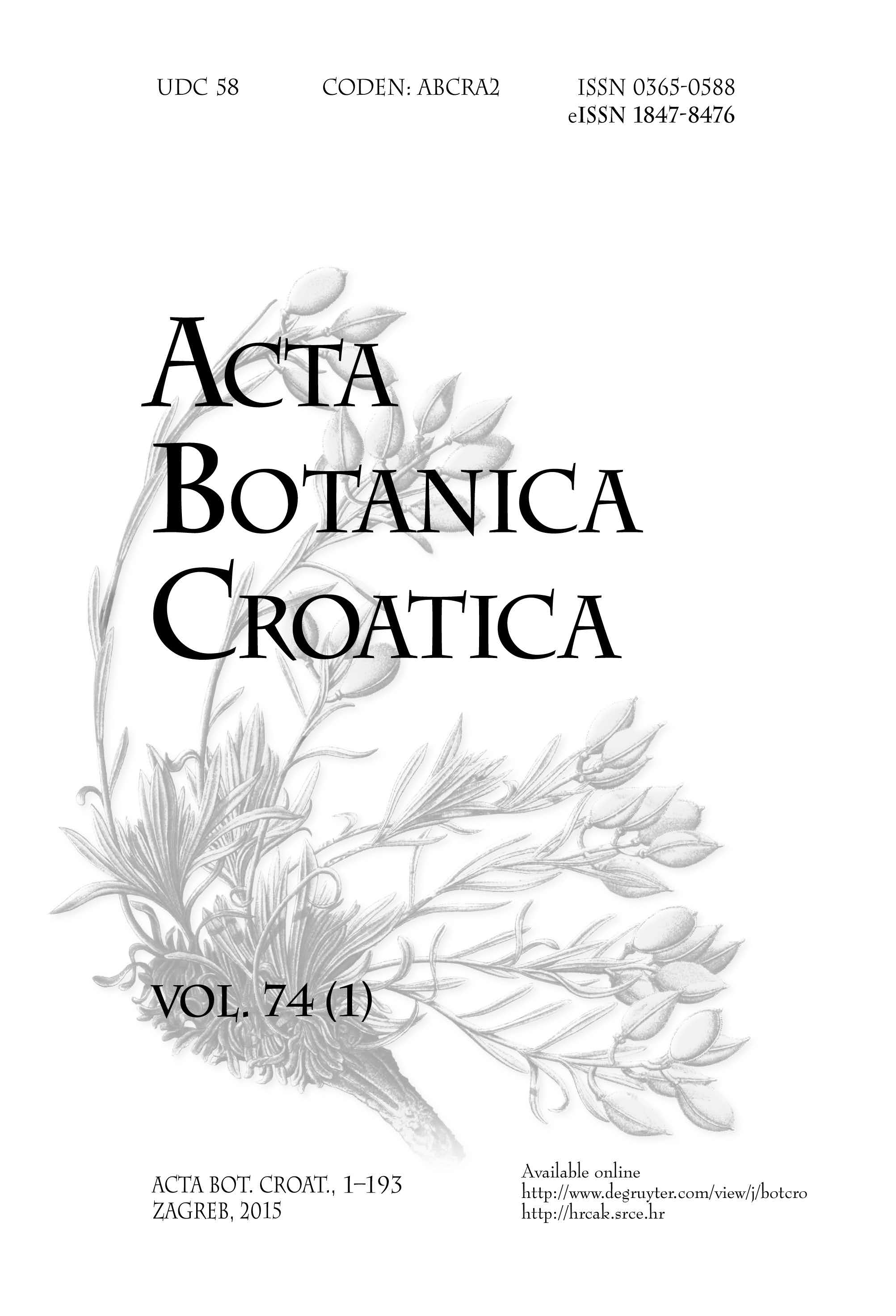Main Article Content
Abstract
Thirteen populations of wild roses (Rosa L.) growing in northern and central Tunisia have been used for studies on the discrimination between accessions and populations. Thirty-eight morphological characters related to the branches, prickles, leaves and corymbs were measured on the collected accessions to study the phenotypic diversity among and within species. Principal component and hierarchical cluster analyses (PCA and HCA) separated rose accessions into two distinctive groups and eight subgroups. A taxonomic interpretation of the morphological variability has shown that Tunisian rose populations belong to two sections (Synstylae and Caninae) of the genus Rosa. Moreover, they have been identified as seven separated taxa: R. sempervirens L., R. sempervirens var. submoshata Rouy., R. sempervirens var. prostrata Lindl. belonging to Synstylae section and R. canina L., R. agrestis Savi., R. micrantha Smith. and R. dumetorum Thuill. belonging to Caninae section. PCA and HCA proved that morphological characters used in taxonomic identification such as styles form, leaf and leaflets length, number of flowers by corymb, leaflet serration, presence of glands in leaflet, peduncle, receptacle and sepal have a high value of discrimination, and have been very successful in morphological identification.
Keywords
Article Details
Acta Botanica Croatica is an Open Access journal with minimal restrictions regarding content reuse. Immediately after publishing, all content becomes freely available to anyone for unlimited use and distribution, under the sole condition that the author(s) and the original source are properly attributed according to the Creative Commons Attribution 4.0 International License (CC BY 4.0).
CC BY 4.0 represents the highest level of Open Access, which maximizes dissemination of scholarly work and protects the rights of its authors. In Acta Botanica Croatica, authors hold the copyright of their work and retain unrestricted publishing rights.
By approving final Proof the authors grant to the publisher exclusive license to publish their article in print and on-line, in accordance with the Creative Commons Attribution (CC-BY-4.0) license.

